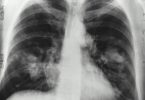The number of non-fatal home accidents is staggering—likewise the number of fatalities. Different studies have been carried out over the years and the statistics may differ depending on where you look. For example, the National Safety Council’s (NSC) Injury Fact reported an estimated 175,500 preventable home injury-related deaths in 2021.
Ruby Homes mentioned that older people above 75 years are 2.5 times more likely to die from home injury while children 0 to 4 years are 9 times more likely to die from home accidents. Regardless of where you look, it is easy to realize that preventable home accident-related injuries and deaths have been on the rise since 2000.
Therefore, while anyone—regardless of age—can be a victim of a home accident, you should take home safety measures more seriously if you have very young children or seniors around the home. The main causes of home accidents include:
- Poisoning
- Falls
- Choking
- Fire/smoke
- Drowning
Out of the types of home accidents, poisoning (including drug overdose) is the most reported, followed by falls and others. Sadly, according to NSC’s injury data, Black people have the second highest frequency of preventable home accident-related injuries and deaths behind White non-Hispanics. The 2021 data stood at 15%, up from 14% of the previous year.
Also, the July 2021 Resident Fire Loss Estimates released by the United States National Estimates of Fires, Deaths, Injuries, and Property Losses from Unintentional Fires showed that Black people were nearly twice as likely to suffer fire injuries and deaths. The statistics tilt against Black people and communities across almost all the different types of home accidents.
How to prevent home-related accidents
Home accidents are preventable, and, in most cases, you only need to make minor home modifications or consciously decide to take safety more seriously. Since there are different categories of home injuries, there is no one-size-fits-all. Therefore, it makes sense to talk about the prevention of the different home injuries separately.
Poisoning
Poisoning-related home accidents can be in the form of food poisoning, drug overdose, or drinking of harmful substances. Drug poisoning has been the most common form of accidents across the United States and the UK. According to the NHS, children under 5 years have a high risk of poisoning.
- Keep all medicine, vaping supplies, and chemicals out of the reach of children
- Make sure all chemical and cleaning products are kept in their original container or properly labeled and stored far from food
- To avoid drug overdose among seniors, use automated tablet dispensers to make sure they take their drugs at the right time and amount when caregivers are not around
- Dispose of medicine and chemical containers properly
- Read patient information leaflet carefully and avoid taking medicines with alcohol or foods they may react to
Falls
Surprisingly, the National Law Review mentioned that 45% of unintentional injury deaths happen at the individual’s home. It would have been less of a surprise if it happened somewhere else. Thankfully, little modifications can go a long way when it comes to the prevention of fall injuries.
- Install grab bars on stairs and wet areas like bathrooms, especially if there are seniors in the home
- Mop up spills as soon as they occur to avoid slip and fall injuries
- Use a cable management system to keep all cables organized so that children or older adults will not trip on them
- Make sure that all walk areas are free from clutter
- To prevent children from going to stairs where they stand a high risk of falls, install safety gates
- While rugs beautify homes, they can shift under the feet leading to fall injuries. Therefore, always install rugs with a rug pad to prevent this from happening
- Make sure the home is properly lit, especially areas around stairs. This helps to prevent fall injuries from dim visions
Choking
Choking accidents are mostly common among children when they swallow large or spiky objects or mistakenly cover their faces with nylon bags. Proper disposal of nylon bags will help prevent choking accidents.
Fire/Smoke
Fire hazards occur frequently. Sometimes even those that were not burned suffer injuries from smoke inhalation.
- Install smoke and carbon monoxide detectors which are crucial for early detection. Test them regularly to ensure they are working optimally
- Keep a fire extinguisher handy and make sure everyone is educated on how to use them
- Create a fire escape plan and make sure you tell everyone about it
Drowning
Drowning is a frequently reported home accident that often leads to the death of children below the age of 5.
- Make sure all pools in or around the house are fenced or covered
- Maintain active vigilance when children are in or around the pools
Our homes should be a place of peace, comfort, and security, but examining the statistics on home accident injuries and deaths doesn’t make it appear so. Therefore, it is important to create that safe space by making all possible modifications to bring the incidences of home accidents to the barest minimum.
For more reading
https://injuryfacts.nsc.org/home-and-community/home-and-community-overview/introduction/
https://injuryfacts.nsc.org/all-injuries/deaths-by-demographics/race-and-ethnicity/
https://www.cpsc.gov/s3fs-public/2016-to-2018-Residential-Fire-Loss-Estimates-Final_0.pdf
https://www.natlawreview.com/article/10-tips-to-avoid-accidents-your-home








